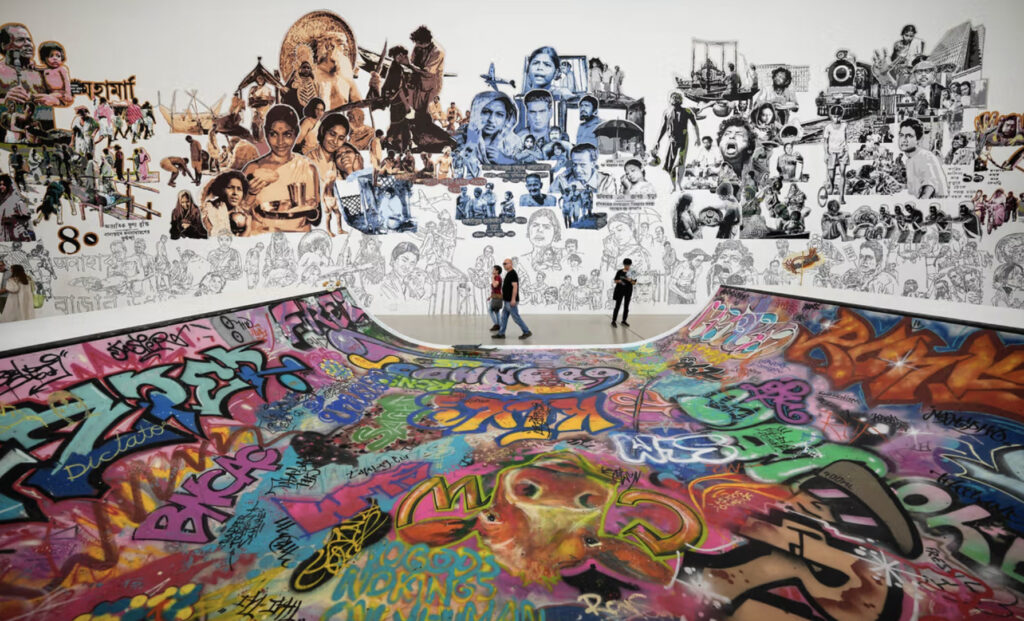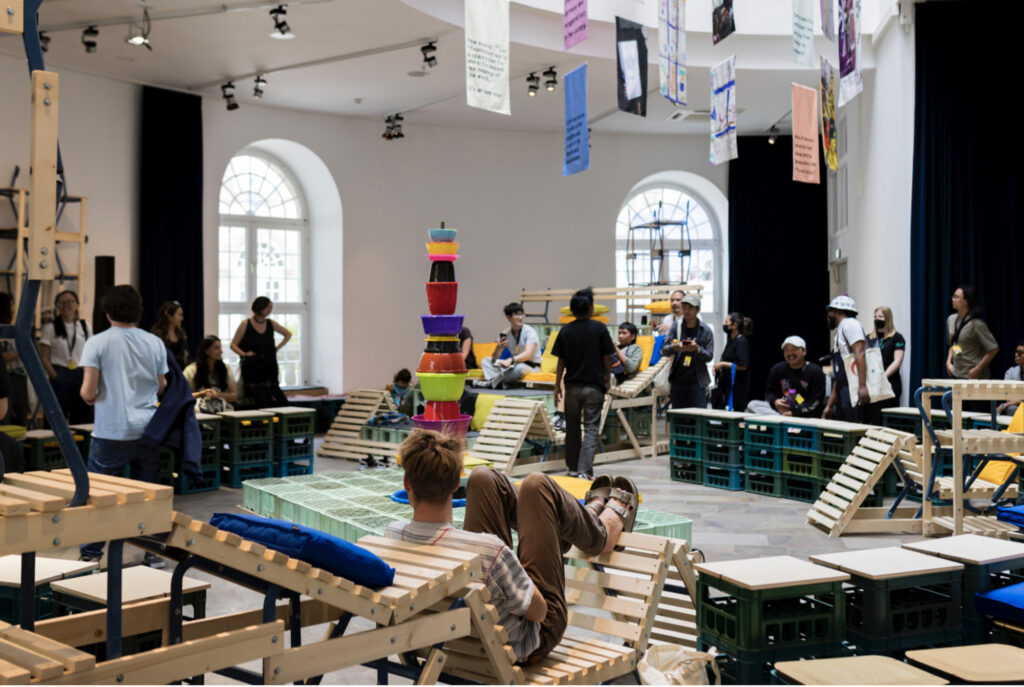Case Example: From Sustainability Themed Exhibition to Planning for Circularity
Museum Fridericianum gGmbH
Kassel, Germany

Documenta is one of the world’s most renowned contemporary art exhibitions, attracting more than 800,000 visitors to Kassel, Germany every 5 years. For documenta fifteen in 2022, the organizing committee committed to integrating social and ecological sustainability across multiple aspects of the exhibition.
Having joined the Action Network Sustainability in Culture and Media (ANKM) in 2020, documenta joined other arts and culture organizations in signing on to climate protection goals of the German government, the Paris Agreement and the 17 Sustainable Development Goals of the United Nations.
How do these goals translate into action at museums and other cultural organizations?
For documenta fifteen, the goals included significantly reducing the exhibition’s carbon footprint and establishing a closed materials cycle. The organizers saw this event as an opportunity to explore and demonstrate the possibilities and challenges of sustainable event management.
After consulting with sustainability experts, documenta 15 organizers determined their environmental focus would include: impacts of exhibition development and production, event catering, merchandise, mobility, and infrastructure within the Museum Fridericianum, among other areas of environmental impact. Planning documenta fifteen as a model lower carbon, lower waste event was a cross-cutting task that required the collaboration of many stakeholders and partners, all committed to integrating sustainability strategies and low carbon solutions. Documenta fifteen exhibition architecture and displays were predominantly made of reused objects and recyclable materials, and the museum’s modular wall systems helped to avoid waste associated with building and unbuilding the exhibition.
Since documenta 15, the Museum Fridericianum, has embraced environmental sustainability and circularity, and integrates them into development of all their exhibitions. According to Larissa Huttenhein, Deputy Head of Production & Techniques for documenta and Museum Fridericianum, “Exhibitions with their high short-term demand for resources contribute to carbon during their production and disposal. Addressing this environmental impact requires detailed planning of the exhibition set-up to reduce resources and minimize waste.”

Continuing to use a holistic planning approach, the museum integrates sustainable materials use and considers the entire lifecycle impact of an exhibition. This includes avoiding toxic and non-recyclable materials, utilising second-hand materials, and actively participating in material reuse initiatives internally and with community partners.
Fundamental to the museum’s exhibition planning is attention to the pre- and after-life of materials used for artworks, displays and architecture. They aim to reduce waste and associated GhG emissions through their materials choices and by extending material life through reuse. Sourcing and donating materials are key parts of the museum’s circular strategy. Local partner collaborations, such as repair cafés, cleaners, second-hand materials shops, and local recycling centres help extend materials life for their own uses and others.
When choosing to use new materials purchases, the museum seeks to minimize the environmental impact of transportation, prioritizing the use of local materials, and opting for transport by sea freight instead of air freight whenever possible.
Says Huttenhein, planning more sustainable and circular exhibitions at Museum Fridericianum includes key concepts of “avoid, reuse and relocate”.’
Source: video presentation: documenta: On the way to sustainable major art exhibitions? documenta and Museum Fridericianum gGmbH, Kassel, Germany, Green Museums Summit, 2024.